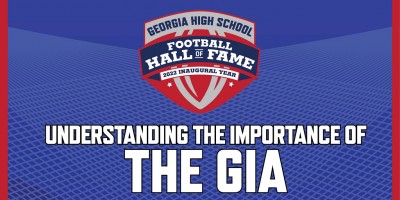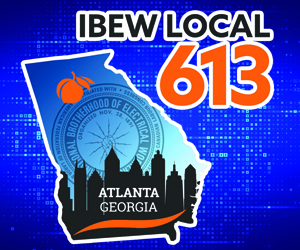
The Georgia High School Football Hall of Fame board placed a heavy emphasis on former GIA players when they selected the inductees for the Inaugural Class of the Georgia High School Football Hall of Fame, making sure no deserving athletes were overlooked.
The Georgia Interscholastic Association was the governing body for high school athletics for African-American schools, founded in the post-World War II era in 1948 and holding state title events through 1970. Although it was not the only black organization for high school sports during that time, it was one of the most prominent.
Four players were inducted into the Inaugural Class of the Georgia High School Football Hall of Fame that played for GIA schools: Jim Parker, Otis Sistrunk, Clarence Scott, and Emerson Boozer. Parker graduated from Ballard-Hudson High School, Sistrunk graduated from Spencer High School, Scott graduated from Trinity High School and Boozer graduated from Laney High School. Their individual performances on the gridiron helped highlight the GIA and bring attention to the many great players that played within the organization.
Becky Taylor of the Tifton Gazette, and a Hall of Fame board member, emphasized the relevance, how valuable the GIA was, and what it meant as an organization during that era.
“The GIA grew out of the Big 7 Conference, which had seven schools for about one year, then expanded to eight. The Big 7 had been the largest high schools in the state for black athletes,” said Taylor. “You had Washington Atlanta, which until the Mid 40’s was Atlanta’s only public high school for African Americans. You had a lot of these unofficial conferences running around, and there have been several organizations.”
The GIA was not only vital in football, but also made an impact in track and basketball. It proved crucial to smaller schools that lacked the proper funding and needed additional support for their athletics programs.
“There wasn’t a place to stay in so many of the towns they went to,” said Taylor. “Also, I doubt the schools had the funding to really send them anywhere. It’s amazing what the GIA did with a general lack of funds at some of these schools that were on shoestring budgets. They were able to get divisions established immediately. The league was very well run. There were few issues over the years with the playoffs or having teams show up. They also had basketball established, probably with help from Savannah State. Track was huge from the start. They had a terrific partner in Fort Valley State to host everything. Not only was it very organized, but you had so many Olympians coming out of Georgia in that era. At the very least, it gave schools a push to get programs organized.”
The GIA reached its pinnacle of teams in football, with up to 120 teams playing football in Class AA, the largest schools in the state. In 1966, there were 59 schools in Class A, with a precipitous drop off in Class B, just 14 schools, according to Taylor. In 1966, the GHSA formally opened itself to integration. Schools from Atlanta and Savannah were granted entry into the association. Over the next couple of years, a slow trickle of big GIA schools left for the GHSA.
“Atlanta City Schools was the first school to integrate in Georgia in 1961. It wasn’t widespread until the freedom of choice in 1965. Of course, we don’t have the GIA with integration,” Taylor said. “They were now starting to get coverage. They started getting more scouts. You started seeing college faces. Minnesota got a bunch of players. Murray Warmath, the head coach there, apparently had a big network of scouts. It was tremendous for the players that they started getting more attention and having more local options.”
Hall of Fame Game is Friday at 8 PM on Peachtree TV. Here is the link to watch.










































